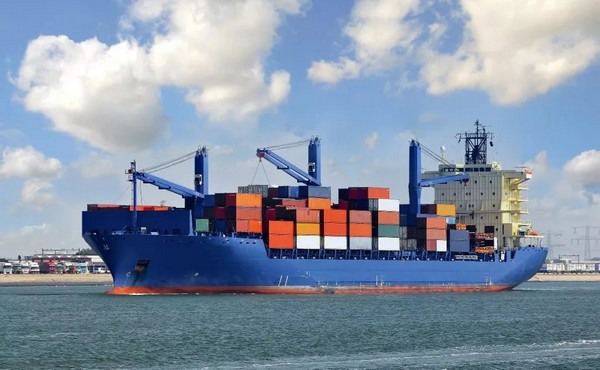The biggest challenges for the global trade in fruit and vegetables are the pandemic and a limited shipping capacity. This situation is not just bad for fruit importers and exporters, but puts a lot of pressure on transport companies as well. Thomas Wang, spokesperson for Shenzhen Cool Chain Logistics, recently shared his insight into the global fruit and vegetable market.

A shock for the global fruit and vegetable distribution industry
The current environment is challenging for the global fruit and vegetable trade. That is why a number of importers shift their focus to premium domestic fruit instead. Import fruit used to account for about 70%-80% of high-end supermarket fruit in first-tier cities, but this year that ratio dropped to about 30%-40%. Thomas Wang analyzed this development from the viewpoint of distributors.
First, the risk is great for importers. Global shipping capacity has been strained since last year. The shipping price is soaring. And turnovers are slowing down. In some cases the shipping fee for one container is higher than the product value of the products inside that shipping container. In addition, many ports have strict procedures for inspection and quarantine. These measures have only become more strict during the pandemic. Ships are delayed in every port of call, for up to 3-4 days per port. Such delays introduce much uncertainty into a shipping schedule. Moreover, many key ports deal with back logs. Ships are waiting in the harbor with their cargo on board and no way to offload. This further delays the delivery of import products.
Second, Chinese consumers become more familiar with premium domestic fruit brands. Take dragon fruit as an example, prior to the outbreak of Covid-19 the dragon fruit market was dominated by Vietnamese dragon fruit. However, the outbreak of Covid-19 created many obstacles for dragon fruit transport between Vietnam and China. The Chinese import volume of Vietnamese dragon fruit immediately dropped. Chinese consumers turned to premium domestic dragon fruit in the absence of Vietnamese import dragon fruit. What many consumers did not know is that the overall surface area devoted to dragon fruit plantation in China is already larger than in Vietnam. The annual production volume of Chinese dragon fruit is huge. And domestic dragon fruit does not have to go through the lengthy inspection and quarantine procedures at the border, nor do domestic dragon fruit farmers pay customs at the border. And distribution is much quicker. These are all attractive points for visiting merchants.
Third, the unique characteristics and selling points of import fruit are growing weaker. When Chilean cherries first entered the Chinese market a few years ago, the cherries were immensely popular and the price was very high. The import volume has only grown larger since then. Chilean cherries are available from the largest supermarkets to the smallest street vendors. The novelty has worn off. Or take Sunshine Rose grapes as another example. Only two years ago, the market price of Sunshine Rose grapes from Korea was around 300 yuan [46.54 USD] per 0.5 kg. The market price of domestic Sunshine Rose grapes was only around 50-60 yuan [7.76-9.31 USD] per 0.5 kg. And since the overall surface area devoted to Sunshine Rose grape plantation expanded in recent years, the price has come down to only a few yuan. Consumers are spoiled for choice, and the prices keep falling. That is a huge shock for the import industry.
The decline is slowing down
"Although the import volume of fruit and vegetables is much smaller than in previous years, compared to the depressed market of last year, we can see the pace of decline slowing down," said Thomas Wang.
First, procedures for inspection and quarantine are faster now. "When the pandemic first broke out, China implemented extremely strict inspection and quarantine measures in every port. These procedures took a lot of time during the height of the pandemic. In some cases shipping containers were left in ports waiting to be processed for several days. Now that the Covid-19 situation in China is gradually brought under control, the labor shortage is easing up. Many port authorities increase the inspection personnel and that improves the efficiency of inspection and quarantine procedures. Although the clearance rate is not yet on the same level as before the pandemic, there is still great improvement compared to last year."
Second, the global shipping crisis is slowly improving. The shortage of shipping capacity showed signs of improvement last month. Although the price is still high, cargo space is not as scarce as before. According to insider news, the shipping price is expected to come down as early as either late October or early next year.
Third, the market prospects for some import fruits are still quite good. The import of western products has greatly declined, but some Asian import products show great potential. Durian, longan, and jackfruit, for example, have great potential in the import market, because these fruits can not be produced in large volumes in China.
Shenzhen Cool Chain Logistics
Shenzhen Cool Chain Logistics is an international distribution company specialized in cold supply chain services for international trade in fresh produce.
When asked about the strong points of this company, Thomas Wang replied: "We rely on a mature and well-developed global network to provide a complete set of services for clients in the international fresh produce market, including packaging in overseas production areas, fumigation, overland transport and customs clearance, as well as international shipping, air freight, and documentation in import ports, such as product lists, quota applications, and customs clearances, and of course refrigerated distribution. And for exporters we rely on our domestic network to provide clients with storage space, refrigerated overland transport, loading, customs clearance, international shipping, air freight, and other cold supply chain services. Moreover, Cool Chain Logistics also provides clients with specialized buyer representation, retail representation, and trade representation, as well as consultancy services for traders in China and abroad."
For more information:
Mr. Wang
Shenzhen Cool Chain Logistics
Tel.: +86 13924653925
E-mail: thomas@coolchainlogistics.com
